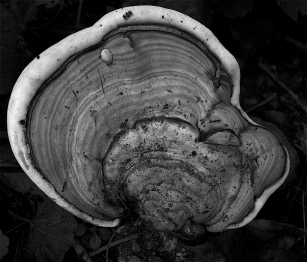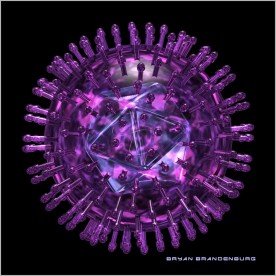 Fungal extracts prevent hepatitis C virus infection
Fungal extracts prevent hepatitis C virus infection
Hepatitis C virus (HCV) is a huge cause of liver cancer, but current treatments are very expensive and not that great. Since HCV is a cunning little virus capable of quickly evolving drug resistance, simultaneously attacking it at several key points during its life cycle has the best chance of resolving infection. Researchers in Japan have now created and screened a library of 300 natural drugs isolated from fungi found on seaweed, mosses and other plants, and tested their ability to shut down HCV infection. One of their best hits, sulochrin, repelled several strains of hepatitis C virus, and was free from any toxic side effects. When they combined sulochrin with the traditional HCV drug, telaprevir, results were even better. Although any potential off-target effects of sulochrin still have to be ruled out, this research highlights that the natural world is a tremendously rich source of new drugs that should continue to be mined.
 Unwinding shielded DNA attacks the root cause of prostate cancer
Unwinding shielded DNA attacks the root cause of prostate cancer
Most organs in the human body, including the prostate gland, contain a tiny population of stem cells that replace old defunct cells with shiny new ones. If these stem cells get damaged, they can become carcinogenic machines, dividing uncontrollably to form a tumour. Such cancer stem cells are thought to be the driving force that creates prostate tumours. Cancer stem cells are very difficult to kill, since they have excellent inbuilt safety features, one of which is very tightly coiled DNA that rebuffs normal treatments. Researchers at the University of York have now shown that treating prostate cancer stem cells with drugs that unwind and relax DNA sensitises them to common chemotherapies, allowing them to be destroyed and ultimately preventing tumour relapse.
Chilly temperatures help cancers to grow
 At low temperatures the human body has a hard time, entering a state of thermal stress where only the most vital systems, like the brain, are left switched on. Now, a paper published in PNAS suggests that cold has yet another disadvantage – it changes the way cancer cells grow and spread, at least in mice. Mice living in a relatively cold environment (around 22°C) had cancers that grew more quickly and aggressively than mice living at a nice thermally comfortable temperature (around 30°C). Both the cold and the comfortable mice had the same numbers of potential cancer-fighting immune T cells when they were healthy, but when they got sick, the T cells in the comfortable mice were quicker and better at burrowing into the tumour to attack it. They also secreted more cancer-fighting substances than the cells from cold mice. In the tumours of cold mice, there were greater numbers of suppressive cells capable of shutting down normal immune responses. Cold temperatures, then, shifted the body’s response from fighting the tumour to accepting it. This suggests that the benefits of heat therapy for cancer may have been largely overlooked. Adapted from an article originally published on The Conversation.
At low temperatures the human body has a hard time, entering a state of thermal stress where only the most vital systems, like the brain, are left switched on. Now, a paper published in PNAS suggests that cold has yet another disadvantage – it changes the way cancer cells grow and spread, at least in mice. Mice living in a relatively cold environment (around 22°C) had cancers that grew more quickly and aggressively than mice living at a nice thermally comfortable temperature (around 30°C). Both the cold and the comfortable mice had the same numbers of potential cancer-fighting immune T cells when they were healthy, but when they got sick, the T cells in the comfortable mice were quicker and better at burrowing into the tumour to attack it. They also secreted more cancer-fighting substances than the cells from cold mice. In the tumours of cold mice, there were greater numbers of suppressive cells capable of shutting down normal immune responses. Cold temperatures, then, shifted the body’s response from fighting the tumour to accepting it. This suggests that the benefits of heat therapy for cancer may have been largely overlooked. Adapted from an article originally published on The Conversation.
 Common chemotherapy drug helps oncolytic viruses kill tumours
Common chemotherapy drug helps oncolytic viruses kill tumours
There is a lot of excitement in the world of cancer immunotherapy over the potential utility of oncolytic viruses – that is, viruses that specifically infect and destroy cancer cells with the help of the immune system. Since a tumour is essentially a big chunk of overgrown tissue, the immune system often continues to see it as a normal part of the body (although sometimes, the sneaky tumour simply makes itself invisible to the immune system). Even after immune-activating oncolytic virus treatment, properly re-educating the immune system to see the tumour as a malignant intruder is a very difficult process. Researchers at McMaster Immunology Research Centre now show that administering an oncolytic virus together with a chemotherapy drug that triggers the immune system as it kills cancer cells finally allows the tumour to be recognised as a threat. Once that biological brake has been removed, cancer-fighting immune cells can pour into the tumour and secrete cancer-busting substances. Such exciting new combination therapies can help retrain the immune system to identify developing malignant disease.
Originally published on Scizzle.




